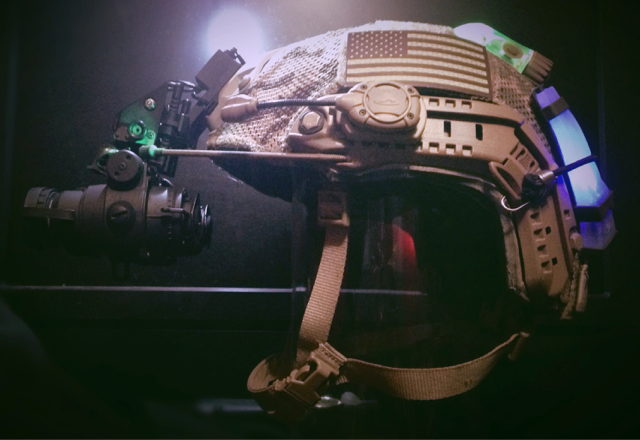During Operation Desert Storm, members of US Special Forces began conducting their night raid and after scaling the walls of an enemy compound they immediately came into contact. This was rather a surprise to them as intel reports showed Iraqi forces at the time were under equipped and the raid should have been easy. Unfortunately, the Iraq military had purchased night vision devices from Delft Sensor Systems out of the Netherlands.
The most common Night Vision Devices (NVDS) supplied to them were the PG1 MS night vision googles which were actually developed for use by drivers of Armored Fighting Vehicles. The system uses two image intensifier tubes and a focus stable objective lens and adjustable eye pieces. The technology has certainly been around for some time now, but it has remained effective. The specifications:
- Weight: 1 kg
- Dimensions: 120 x 138 x 90 mm
- Magnification: x0.9
- Field of view: min 47°
- Resolution (10-3 lux): 2.5 – 4.0 mrad min
- Range: typically up to 150 m
- Type PG 1MS night vision goggles
Image intensifier tube:
- Type: single stage, fiber input
- Power supply voltage: 12 kVDC
- Input Cathode Type: S25
- Output Anode Screen type: P20 Aluminized
The Pg1/MS MkII was marketed as a versatile, passive night vision google system designed for armoured vehicle drivers and for medium to short range observation. The google housing is made up of cast aluminum and contains the optics and the image intensifier tubes, and power supply.

The 47 degree field of view (FOV) of the MkII is very similar to that of the ANVIS (40 degrees) and as there is zero magnification it is an ideal candidate for armored vehicle drivers and for use by foot mobiles. The unit is water proof and should be able to withstand use in inclement weather, though as with all NVDs, performance becomes seriously degraded in heavy rain, snow or fog.
When mounted to the helmet via the ANVIS mount, it is easily lowered and raised in the same way as the AN/AVS-6/9 (for those of you who are already familiar with that device). I have found that the ANVIS ball detent break-has somewhat of a propensity for getting knocked out of the socket, so it is important to keep this in mind especially when operating inside buildings or where low overhangs are present. As added insurance, I use a WILCOX NVG lanyard to prevent the NVGs from hitting the ground should they get accidentally get knocked off my helmet.
As far as cost, the MkII has a life expectancy of about 2,500 hours up to a maximum of 4,000 hours. It uses a single AA battery which of course are easy to acquire and can be had on the cheap. But it isn’t worth anything if it doesn’t perform right?

Well, like any tool in the field, the best way of evaluating performance and ensuring it, is to train with the tool. There is no doubt the MkII is effective, but it is old technology. If you were looking for something for hunting or for hobby fun, than yeah it’s a good buy. If you are an operator, Military, LEO, etc than you should get something more current. 7/10.

